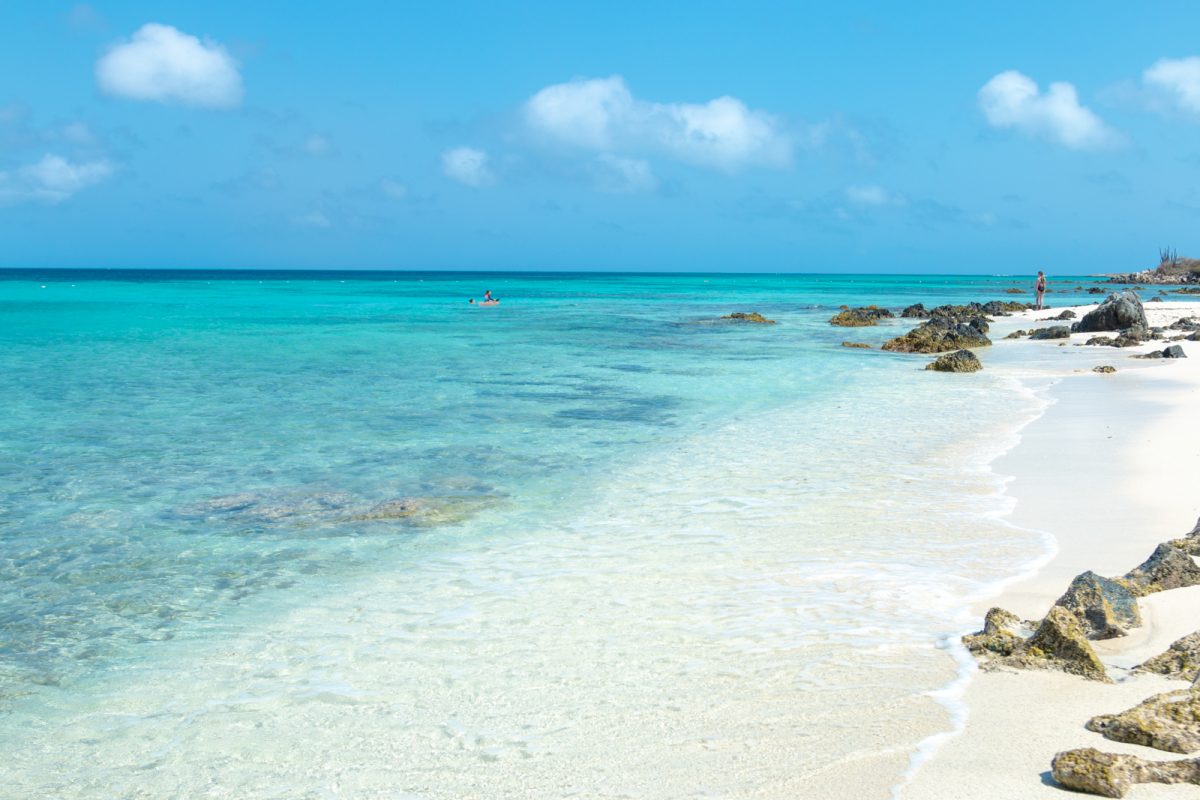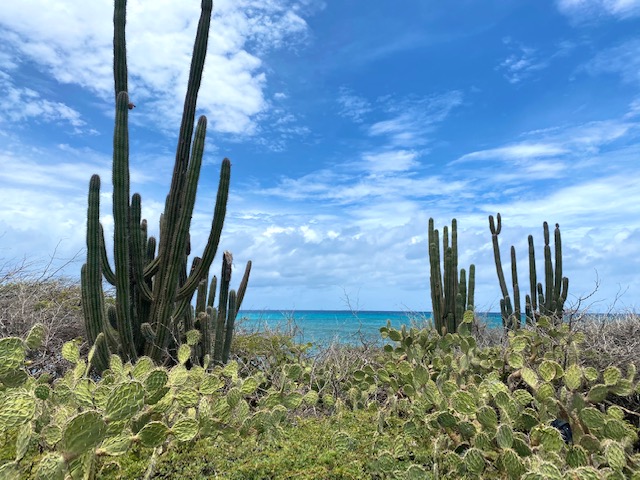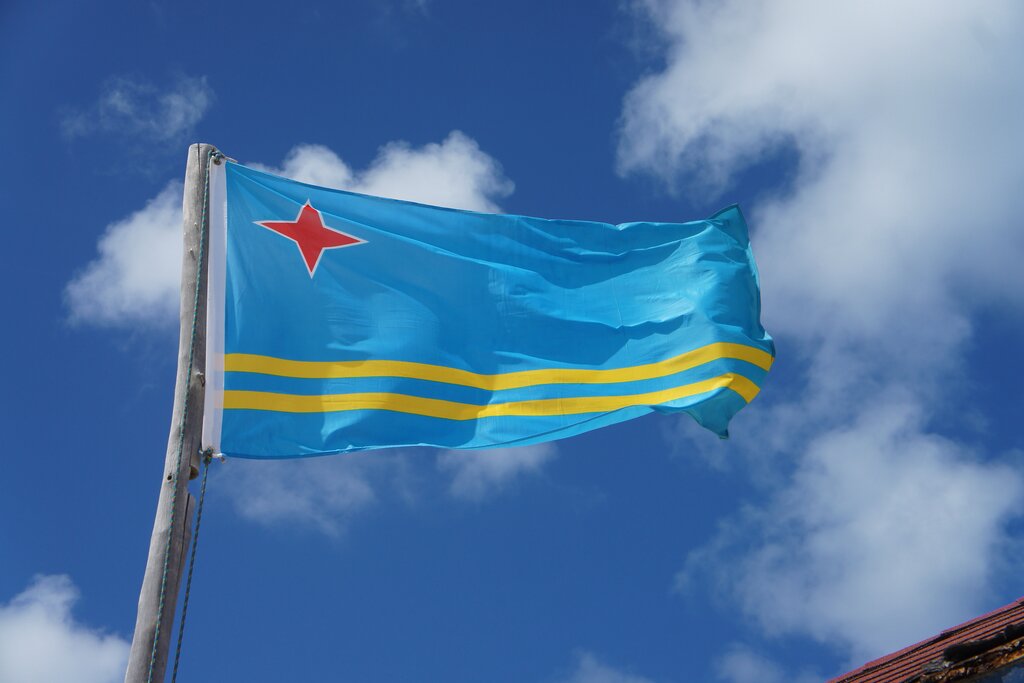Recently, in a popular, Arubacentric Social Media Group, a first-time tourist expressed a bit of dismay regarding their recent excursion to the island. Naturally, the complaint wasn’t about the island’s food – we’ve got some of the best restaurants you could hope to find on a rock in the Caribbean Sea. It also wasn’t about our famed beaches, incredible activities and attractions or Aruba’s current, confidence-inspiring Covid protocols. The grievance lodged (in a since-deleted post) was that Aruba isn’t lush and has no waterfalls.
I was so surprised by that comment, I almost aspirated my coffee. Geographical confusion aside – just one picture of Aruba’s most prolific vegetation should tell you everything you need to know about the climate. While Aruba isn’t quite a desert, it’s definitely not a rainforest either.
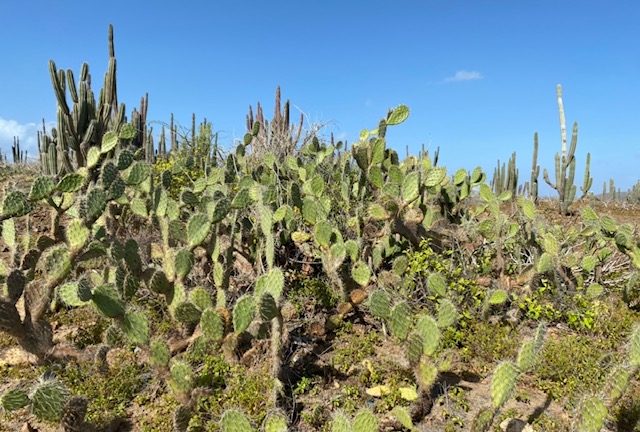
‘Cuz these bad boys don’t grow in the jungle.
One of the reasons that Aruba is such a desirable vacation location is…well, its location. Close to the equator but below the hurricane belt, Aruba’s weather is a sun-seeker’s dream. The island’s yearly rainfall average is around 18 inches – definitely not enough to support water-loving, broadleaf plants. Aruba’s indigenous vegetation is a cavalcade of highly evolved plants that guard their water supply with ferocious efficiency – none, more so than the cactus.
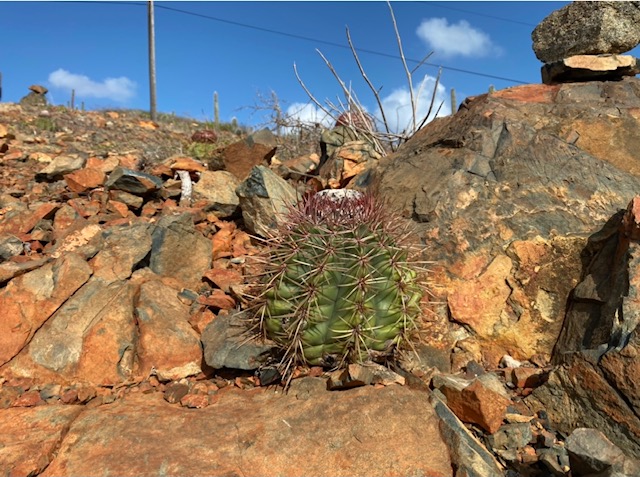
Now, when I say cacti guard their water ferociously, I mean that quite sincerely. There are parts of the island that remain untouched by human hands. These areas of untamed bush are locally known as ‘mondi’. Ask any local, who ran wild through the mondi as a child, and they’ll tell you that playing hide-and-seek between the cacti adds a whole other level of excitement to the game. A dear friend of mine accidentally fell backwards onto a cactus (while wearing 1980’s style, short shorts) when he was a lad. Thirty-seven years later and he still can’t tell that story without cringing and passing a rueful hand over his backside.
Since the island is so arid, the plants that grow here need to be smart and dangerous. From whispery, hairlike spines that embed themselves in exposed flesh to solid spikes that grow as long as a picture nail – Aruba’s plants are ready to defend themselves against interloping fauna that might try to steal their water supply. They stab first and ask questions never.
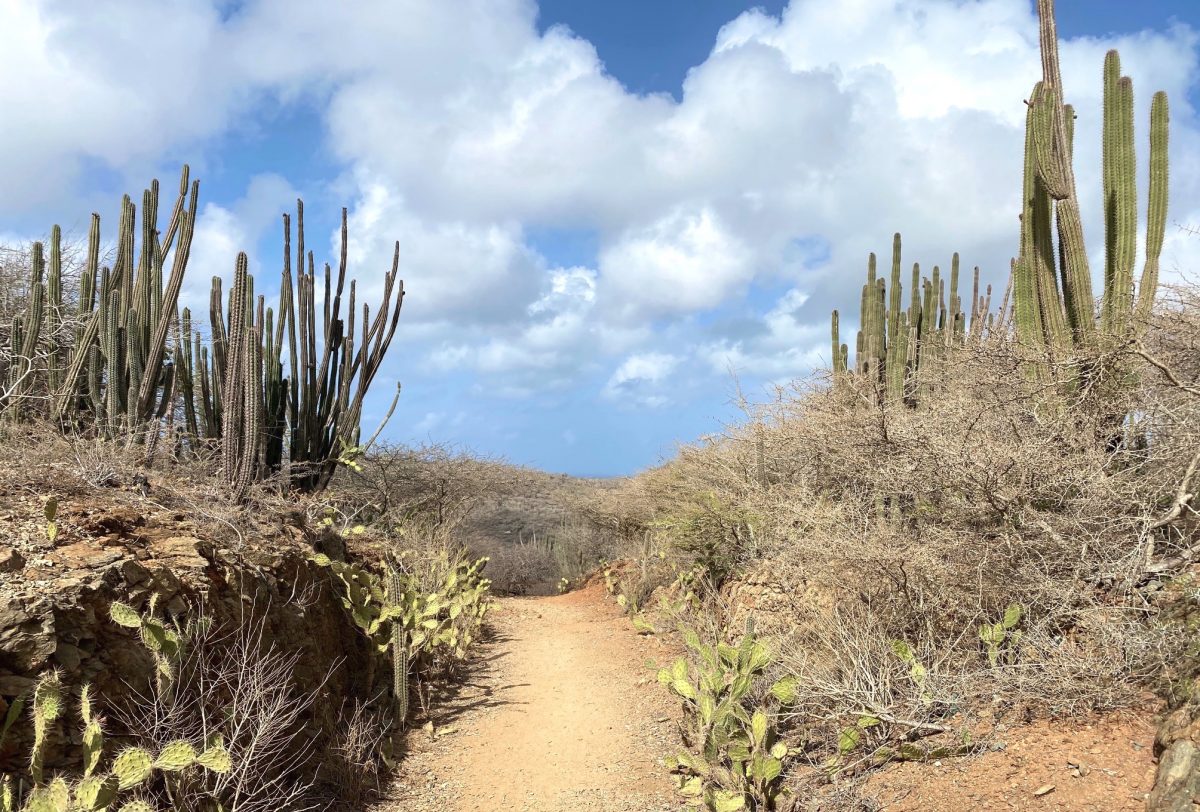
In celebration of our glorious, Stabby Plants, here are some fun facts you might not know about the Cacti: Aruba’s most violent vegetation:
1. Cactus spines are multifaceted.
Aside from the aforementioned function of defense, cactus spines have several other functions.
Aruba’s sunshine is relentless and shade is one of the island’s most valuable commodities. Cactus spines help the plant retain water by providing pinpricks of shade that helps it keep it slightly cooler than the ambient temperature. The spines also act as anti-aerodynamic agents – serving to break -cup Aruba’s bountiful breeze – ensuring that constant airflow can’t wick its precious water away on the wind.
2. Cacti feel waxy.
I do not recommend trying to touch a cacti. It’s a one star experience – at best. However, were you to touch the skin of a cacti – you’d find it feels very much like a candle. This is because plants that need to retain their water produce a fatty acid called cutin that forms a layer of protection that keeps the plant from being scorched and losing moisture.
3. Cacti are the ultimate weight yo-yoers.
Did you ever feel particularly bloated after an exceptional meal? You’re in good company. Cacti can gather up to 200 gallons of water during a heavy downpour. Unlike my pants, cacti skin allows for significant, rapid expansion so the plant can get its drink on while the gettin’s good.
During times of heightened rainy seasons on the island, some of the larger Cacti can pose a bit of a danger. If they absorb too much rain, too quickly, they can become top heavy and topple over. While this would be terrible news for anyone standing in the path of that falling, stabby cacti of moderate destruction, it’s excellent news for the cacti. Once felled, a cacti has a much better chance of reproducing. Since this is a family blog, I’ll spare you the particulars but be sure to click here – if you’re into that kinda thing. (wink, wink, nudge, nudge)
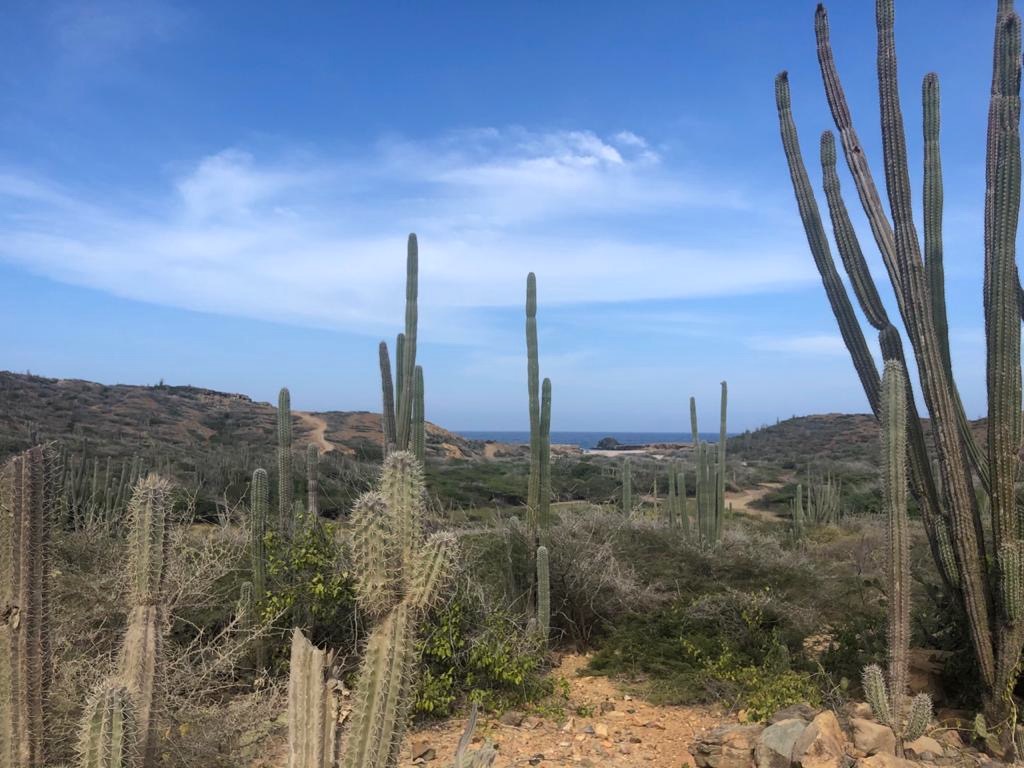
4. Cacti make wonderful, eco-friendly barriers.
One of my favorite local landscaping tropes is the cactus fence. They’re more effective than razor wire and produce oxygen – what’s not to love? Cactus fences can either be completely natural, a strip of cadushi – left along a property line, or manufactured.
You can trust me when I tell you that making a fence from cacti is not a job for the faint of heart or those who suffer from trypanophobia. Check out the beginning of this video to see one of Aruba’s awesome cacti fences.
5. That cactus is so shallow.
That’s not an insult – it’s a fact of nature. Yet another way cacti manage to survive in such dry climates is with a vast network of shallow roots. Most plants grow their roots deep into the Earth in search of groundwater but, clearly, that tactic won’t work on Aruba. As opposed to thick, deep roots, cacti grow an intricate system of shallow roots that spread far away from the plant. This allows for optimal water collection during Aruba’s limited rainy days.
6. Cacti are (arguably) the most versatile plant around.
Ok, ok…hemp fans. Calm down. Everyone knows that hemp is great. You can make at least 101 very different things from it and it can help; both, granny’s glaucoma and her attitude problem. Notwithstanding, tell me this: is hemp going to help you survive on a desert island? No it won’t. It might help you survive Thanksgiving at your in-laws but it will never save your life.
Well, guess what? Chances are, a cactus won’t either.
It’s a popular misconception that you could thwack the top of a cactus off with a machete and find a hollow plant filled with water. What you’d find, were you to thwack a cactus, is a spongy, fibrous filling that contains liquid. However, that liquid isn’t really water anymore. In, yet another, defensive action the liquid in a cactus has such a high concentration of acid that it’s all but undrinkable.
What? Did you think that cacti could basically become a living drinking fountain if you ever found yourself in a pinch?
I know!! Me too! I was so disappointed when I learned the truth.
Yet, if you really were that desperate for sustenance, after some disastrous event left you stranded in the desert…say a mule ride gone awry, and you had a knife, a pair of thick gloves and a can-do attitude, this rugged gentleman can show you how to eat your way to hydration.
VisitAruba’s advice on the subject: don’t ever get stranded in the desert. Come to Aruba instead!
The great water debate aside, cacti – especially the prickly pear cactus – have many medicinal purposes. They can be used to treat a range of ailments from a simple hangover to type 2 diabetes and has anti-inflammatory and antiviral properties. Perhaps, one day soon, cacti will replace single-use plastic containers and microplastic will become a thing of the past. Cacti can also be made into vegan leather, is a cooking staple in many Latin American households and is the one houseplant that you really can’t kill (unless you’re trying).
7. A cactus blossom for your mom
In many Southwestern Native American tribes, cacti were a pretty big deal – for the aforementioned reasons. The cactus came to symbolize warmth, strength and protection while a cactus blossom represents the enduring nature of a mother’s love.

If you’re chasing waterfalls and looking for dense, green foliage that supports flowers as big as your head – Aruba’s probably not the place for you. But, if you’re looking for an awesome vacation filled with sunny days, clear blue water and plants that are clever enough to defend themselves…come on down! Our stabby plants are waiting for you.
